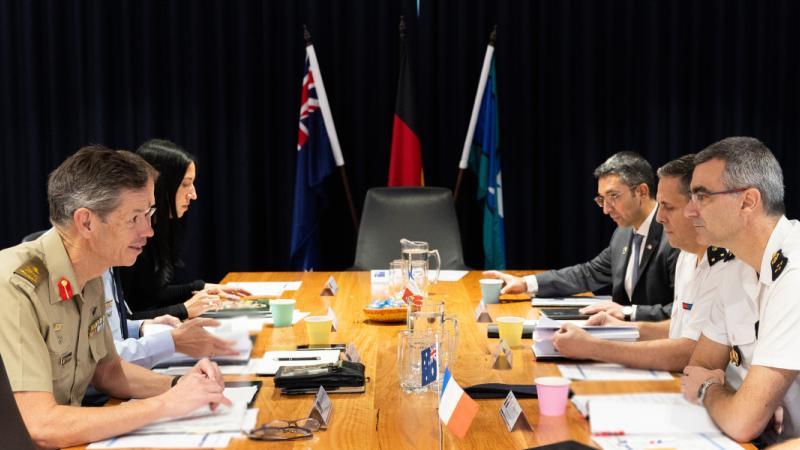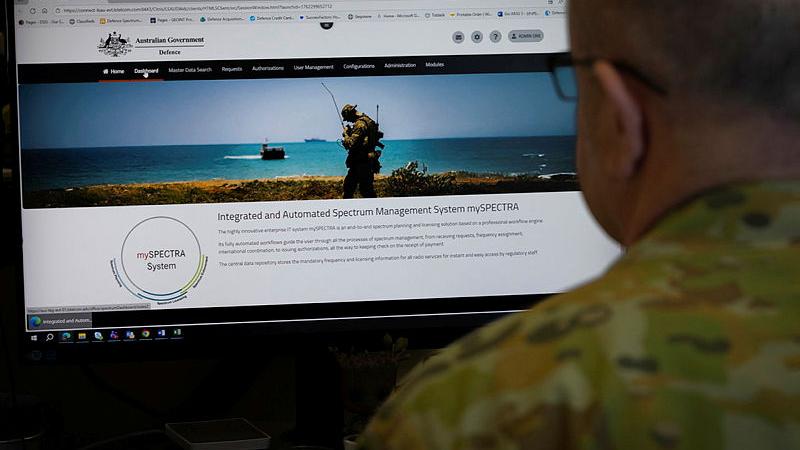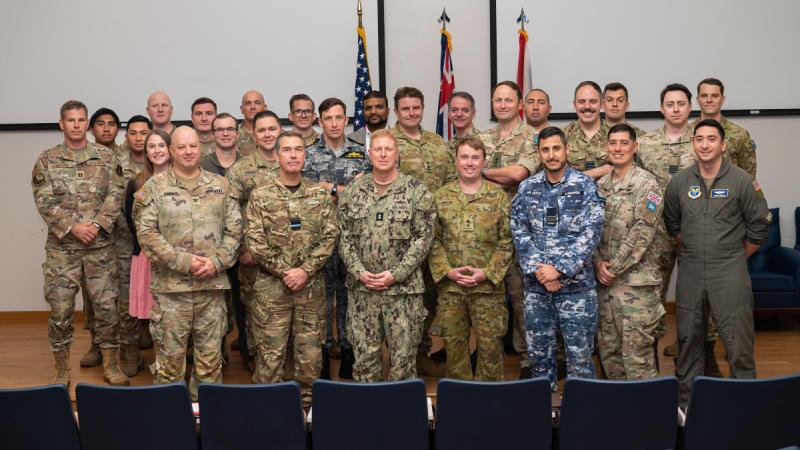28 July 2025
The Royal Australian Air Force (RAAF) has completed air-to-air refuelling clearance trials with the United States Air Force (USAF) at USAF bases Eglin and Edwards.
Two trials occurred over March and April, each aimed at increasing the interoperability between the two nations’ militaries and expanding the list of aircraft cleared for air-to-air refuelling.
At Eglin Air Force Base, in Florida, a RAAF KC-30A multi-role tanker transport aircraft refuelled, for the first time, a USAF F-15EX Eagle II, and continued refuelling testing for the F-15E Strike Eagle variant.
At Edwards Air Force Base, in California, a USAF KC-46A Pegasus aircraft refuelled a RAAF E-7A Wedgetail, also for the first time. Between the two trials, hundreds of refuelling contacts were made.
Squadron Leader Alex Barbaro, a flight test engineer, is the new RAAF Base Williamtown Flight Commander from the Aircraft Research and Development Unit (ARDU). His role was as Flight Test Lead for the KC-30A and F-15E Strike Eagle/F-15EX Eagle II trial at Eglin.
“Our aim was to evaluate the KC-30A/F-15E and F-15EX pairs for air-to-air refuelling operations: are there flight conditions at which refuelling operations can be conducted safely?” Squadron Leader Barbaro said.
“Flying one aircraft immediately behind another, making physical contact between these aircraft, and then transferring fuel between them can be risky, particularly when it is a new aircraft pairing. Things can go awry if you don’t approach it the right way.”
Specialist flight test teams at ARDU are regularly called upon for air-to-air refuelling clearance programs with international partners. Clearing the refuelling pairing leads to increasing the range and endurance of the receiver aircraft.
“It was satisfying to see how seamlessly the USAF and RAAF teams integrated. Everyone was laser focused on finding an operationally useful outcome,” Squadron Leader Barbaro said.
'Expansion of air-to-air refuelling clearances directly enhances Australia’s interoperability with United States and allied partners and, by virtue, increases our ability to project and deliver air power.'
At Edwards, testing the RAAF’s E-7A Wedgetail with the USAF’s KC-46A Pegasus was a unique opportunity, as air-to-air boom receiver testing had not been conducted with Australian aircraft for about 10 years.
Squadron Leader Owen Hamilton was the outgoing RAAF Base Williamtown Flight Commander from ARDU, and was the Lead Test Pilot for the trials at Edwards Air Force Base.
“Air-to-air refuelling testing with E-7A hasn’t been conducted since the E-7A Wedgetail was certified with the KC-30A in 2015,” Squadron Leader Hamilton said.
“This was a great opportunity to ensure corporate knowledge of these campaigns is refreshed and maintained, should we need to do similar in the future.
“The testing leveraged results from previous air-to-air test campaigns, to streamline the testing required to ensure the pairing was safe, efficient and fit for the mission.
“Testing involved flying the E-7A to the very limit of its performance, and to the extremities of the KC-46 boom limits, in order to confirm that operators will be safe if they ever inadvertently find themselves in these extreme positions.”
Now trials at Eglin and Edwards are complete, there is work to be done back home to complete the findings.
This includes a large amount of data analysis and reporting by ARDU. This information is then provided to the respective Systems Program Offices and the US Aerial Refuelling Certification Agency.
The success of the trials highlights the importance of continued engagement between the test agencies, the RAAF and the USAF.
“The expansion of air-to-air refuelling clearances directly enhances Australia’s interoperability with United States and allied partners and, by virtue, increases our ability to project and deliver air power,” Squadron Leader Hamilton said.


